
The other day the Ineluctable Mr Bugg and I went out to one of the many trails along the Eno River to see what was stirring for spring. The answer: turtles. Lots and lots of turtles. With just a bit else for variety.
To the best that I can determine, they were all eastern river cooters (Pseudemys concinna concinna,) though telling these apart from the yellow-bellied sliders that are common in the area is tricky – mostly, I’m going on the less-domed, more-flared shells. Well, that, and the fact that they were inhabiting a decently flowing river and not, you know, a pond that is the more-favored haunt of the slider. Either can be found in both of course, but the tendency is towards the cooters to be in rivers.
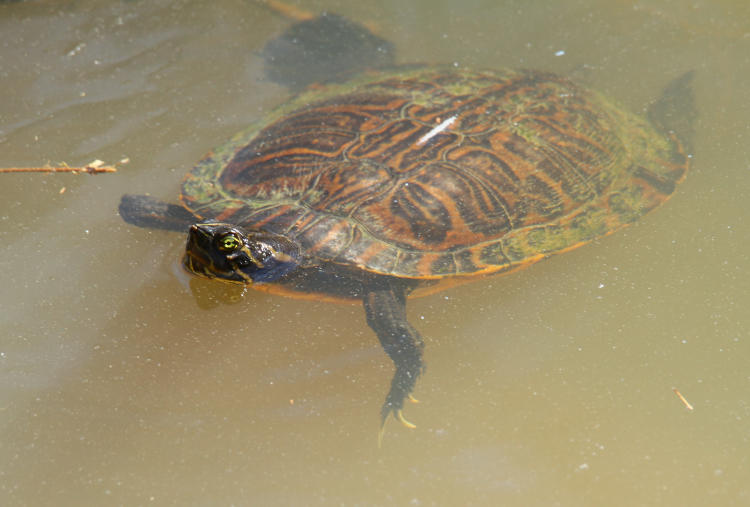
This is a fairly common thing when trying to identify species, really: traits to differentiate one from another are “usually, but not always,” and the photos chosen to illustrate the type aren’t always much help. It’s one of the reasons that I rarely use one source when doing identifications. The exception is BugGuide.net, which can be very specific.

This particular juvenile, spotted from behind perched high on some snags, appears quite surprised when we snuck around front for the portrait angle, but it was probably just belching. We made with the stealthy-stealthy moves to get this angle, later realizing that it likely wasn’t necessary at all – the turtle showed no signs of abandoning its perch, and remained in the exact same location on our return loop over an hour later.
The night had been quite cool, with the chill extending into the morning for a bit, so the bright sunlight was enticing to the turtles, gathering energy from the solar heating of their dark carapaces, and anything that let them get out of the water was in use.
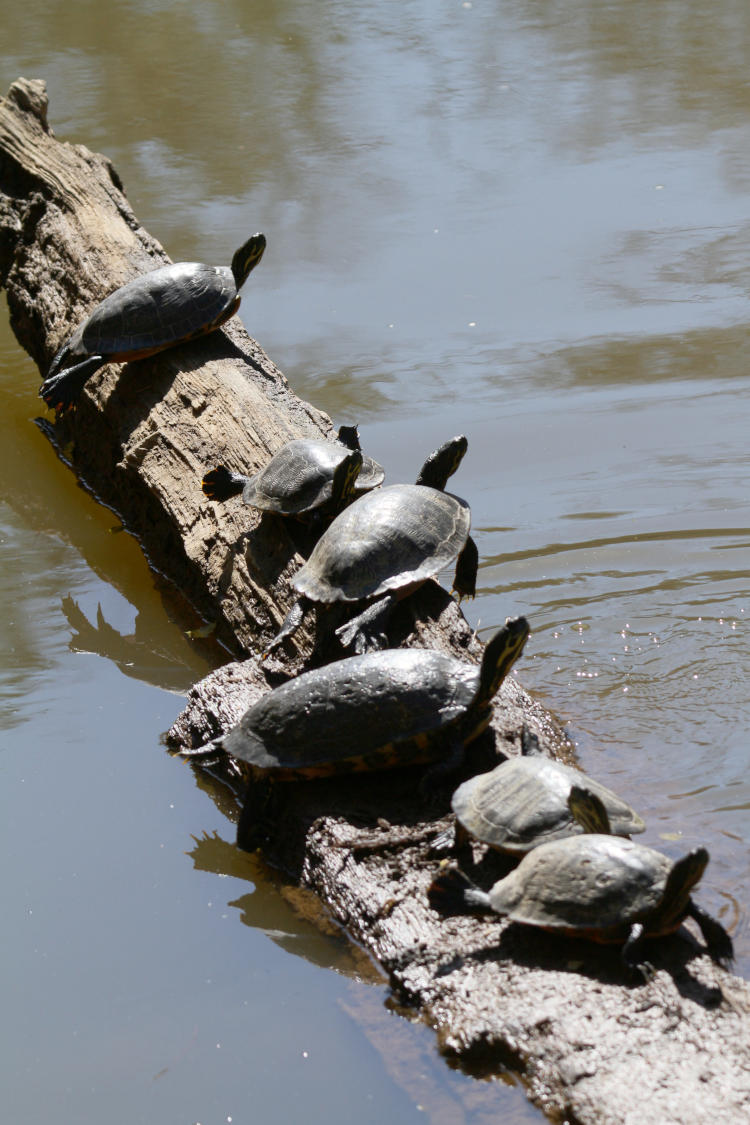
The degree to which they will dive into the water on approach will vary, often depending on how used to people they are and how often there are threats. Here, they were somewhere in the middle, usually abandoning their perches on approach but occasionally, if we were cautious, waiting it out to see if we made more ominous moves. At the pond near Walkabout Estates, the turtles are very quick to get into the water, despite seeing people going past all day long; the difference being (to my mind, anyway,) half of those people have dogs with them. Above, you can see the ripples from one escapee, though the others were less paranoid. Let’s go in closer on that big one.
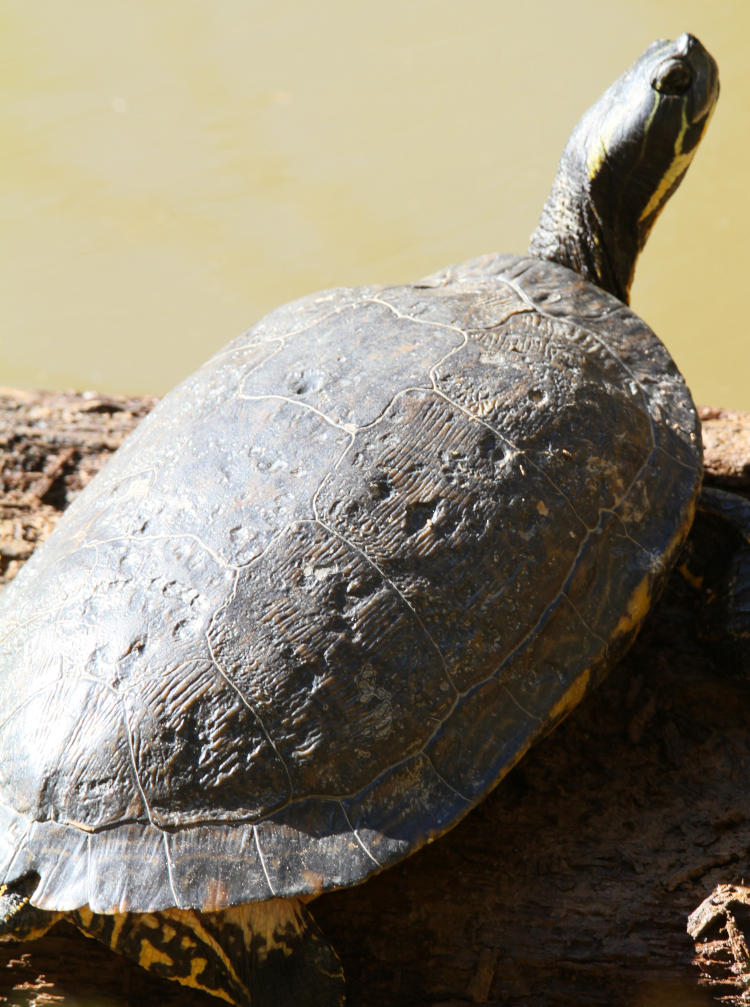
The light angle was ideal to highlight the condition of the carapace, though whether this was from past attacks, disease, or simply age (or a combination of those) I can’t really say. It’s probably the most weathered/damaged carapace that I’ve seen on a local species, however. It was also the biggest specimen, implying a decent age, but the cooters don’t show aging rings on their scutes like the box turtles do, so I can’t judge a specific age from this pic.
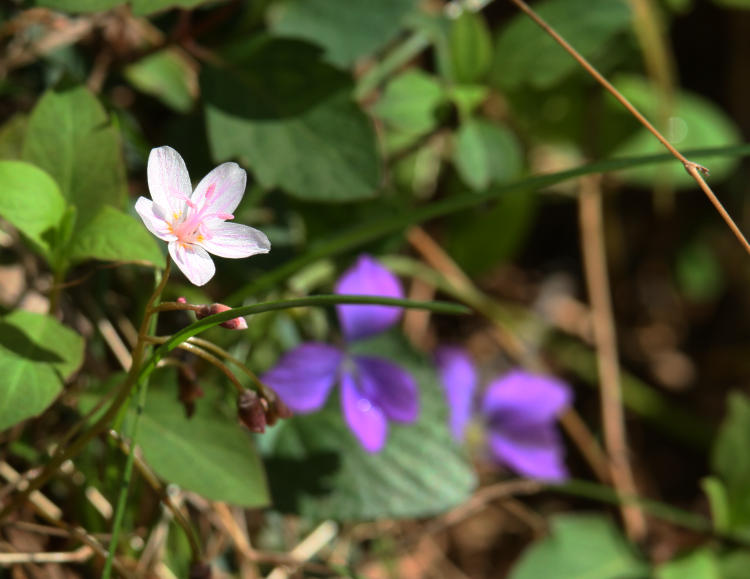
In scattered places, some of the early wildflowers were appearing, like this Virginia spring beauty (Claytonia virginica) appearing in front of some wild violets (Viola papilionacea.) Elsewhere, patches of bluets could be found, and the mayapples were blossoming as well, but the overall landscape still looks a bit barren, faint hazes of green appearing atop a background of grey-brown branches and last year’s grasses.
Beneath one flower, a snail looked as if it might be feeding on a fallen petal.
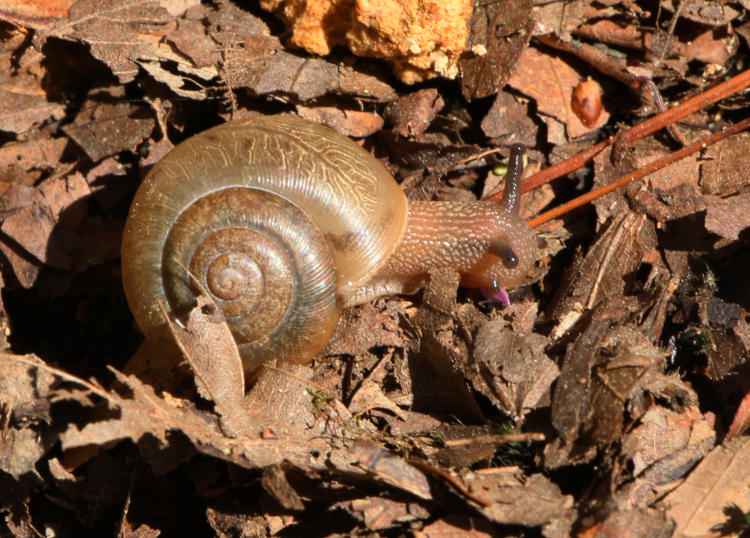
I mean, it was definitely feeding at least from the surface of the petal, but I wasn’t sure the snail (and I’m not about to try identifying it) wasn’t actually swallowing the petal itself. There appeared to be a faint pinkish cast to the body, signifying the petal fragments within, but this was the only angle that I could get and it’s inconclusive. Other frames suffer from that ‘purple fringing’ around the highlights that digital sensors can be prone to, perhaps exacerbated by the Mamiya 80mm macro lens that I’d switched to after this one, so they were a bit misleading.
Spurred on by my spotting of a northern water snake less than a week before, we kept our eyes open, but in three hours of hiking along the riverbank no sign of snakes was even found. That is, until we were on the return leg and just before climbing the hill back to the parking area.

Queen snakes (Regina septemvittata) never get very large and this was a typical specimen, no more than 60cm in overall length, emulating the turtles to get some free energy. We managed a fairly close approach without spooking it, though small movements indicated that it wasn’t asleep (snakes have no eyelids so the eyes are no clue.) I eventually dropped down a bit lower for a different perspective.
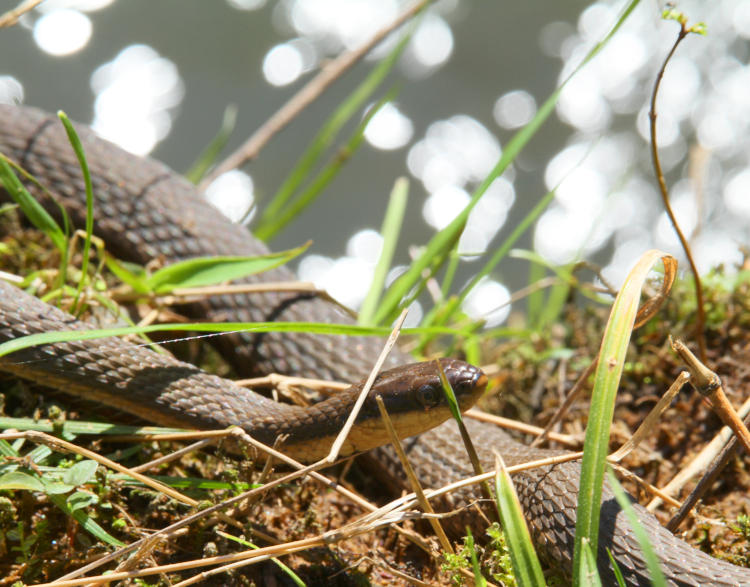
The sparkles were wholly intentional, but I shot four frames with distinctly different effects in each without changing anything – that’s just how variable the water can be. Queen snakes are one of the water snake species in NC, completely harmless and unassuming, often found basking on low branches above the water – I’ve never seen one more than a couple of meters from water, really.
We’re going slightly out of order here for a moment – I do hope that you will eventually find it in your heart to forgive me.
Back at the neighborhood pond many kilometers from the river, we did a quick pass to see what was happening. More turtles of course, these being the sliders, but a significant increase in cormorants.
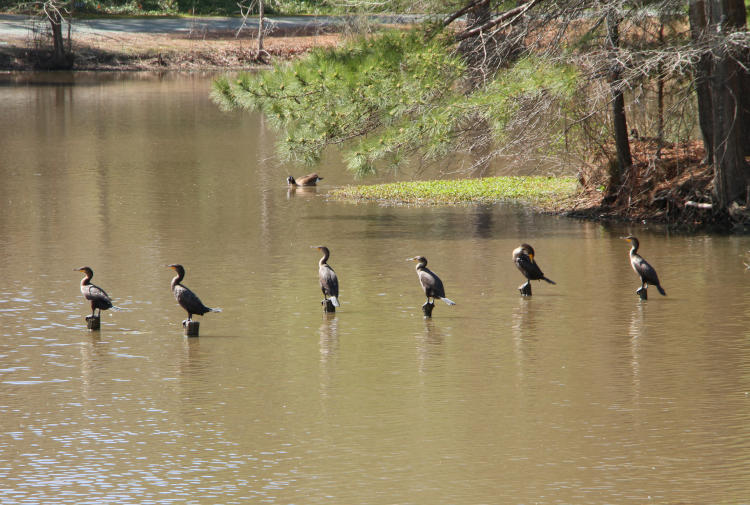
We always have two or three double-crested cormorants (Nannopterum auritum) show up in the spring, but this is the first that I’ve seen six, and the favored pilings were in full use. These appear to all be female – really, the males are a lot more scarce. I’ll have to be making more visits to see how it goes.
And finally, my favorite frame from the river, doing the ‘strong close’ thing that I meant to mention in the previous post on composition and forgot – maybe I’ll go back and edit it, because it’s an important point – I should consider keeping notes. But anyway, a capture from early in the day.
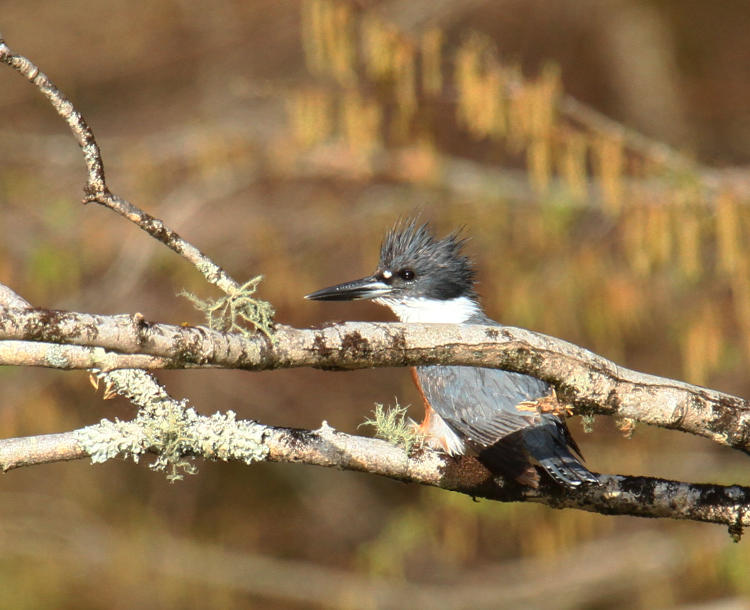
I’m still after a decent portrait of a belted kingfisher (Megaceryle alcyon,) and this is a quite distant specimen shot at 600mm and tightly cropped – decent, but I want better. They’re very spooky in this area and definitely avoid close approaches, and our attempts at stalking were for naught – we were too clearly visible on the bank. Only once have I had one perch close by, this being when my camera was firmly attached to a tripod and unable to aim at the branch directly overhead where the kingfisher had just appeared. I tried very slowly detaching the camera for the shot, but I was far too close for this and the bird fled. Someday.




















































